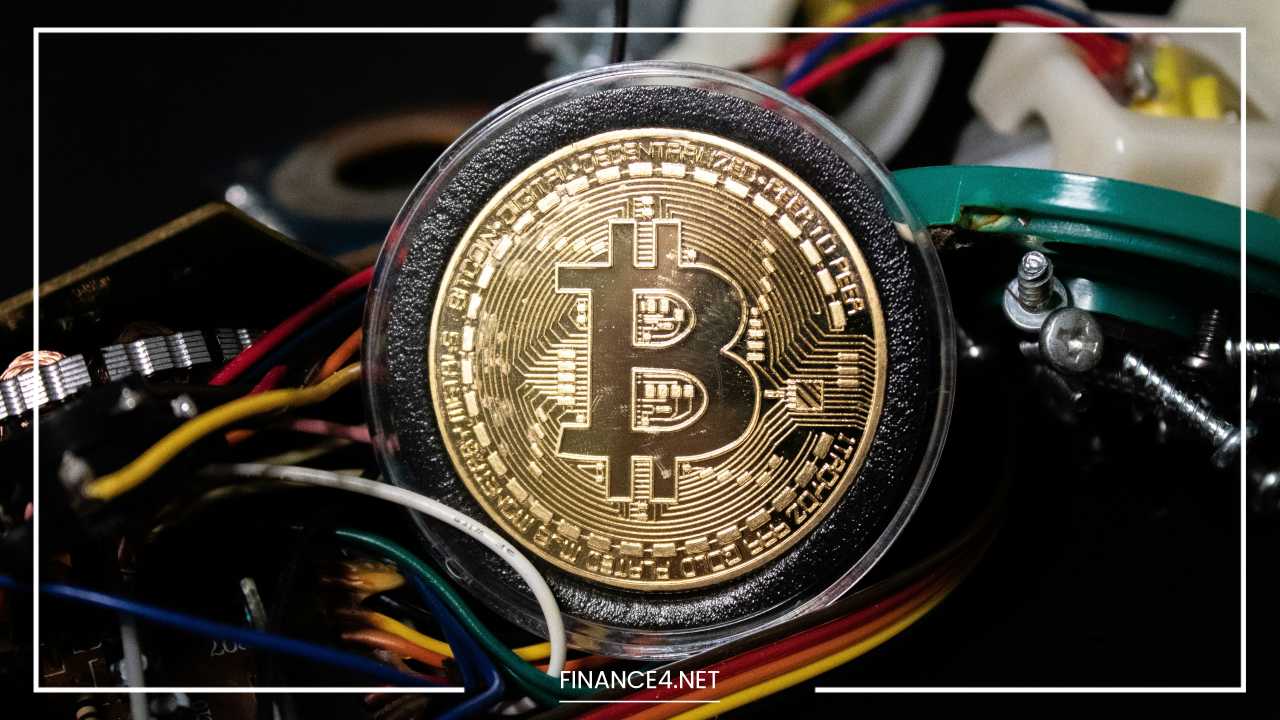Mining Pool: Definition, How It Works, Methods, and Benefits

Mining Pool
Mining Pool: A Comprehensive Guide
Cryptocurrency mining has undergone significant transformation from its early days, evolving from a solitary pursuit to a collaborative venture known as mining pools.
A mining pool is a collective of cryptocurrency miners who combine their computational resources to enhance their chances of successfully mining a block and reaping the associated rewards.
This cooperative approach addresses the challenges inherent in solo mining, where the likelihood of discovering a block can be exceedingly slim, particularly for those with limited computational power.
In the early days of cryptocurrencies like Bitcoin, mining could be accomplished with relatively modest hardware.
However, as the difficulty of mining algorithms increased and the computational power required grew, individual miners found it increasingly challenging to compete against large-scale mining operations.
Mining pools emerged as a solution to this problem, allowing miners to join forces and share both the risk and reward of mining.
How Mining Pools Work
The core concept behind mining pools is to distribute the risk and rewards of mining among all participating members. Here’s a detailed breakdown of the key steps involved in mining pool operations:
- Joining a Pool: Miners choose a pool based on various factors such as reputation, fees, and payment methods. This decision is crucial as it impacts not only potential earnings but also the overall mining experience. Miners should consider pools that align with their specific needs and goals.
- Receiving Work: Once a miner joins a pool, they start receiving mining tasks from the pool. These tasks involve solving complex mathematical puzzles that require significant computational power. The pool’s infrastructure assigns these tasks based on the hashing power contributed by each member.
- Submitting Shares: As miners work on their tasks, they submit solutions, known as shares, to the pool. A share is a valid partial solution to the cryptographic problem that demonstrates the miner’s contribution to the pool’s overall effort. The pool collects these shares to track each member’s contribution and effort.
- Reward Distribution: When the pool successfully mines a block, the reward is distributed among its members. The distribution is based on each member’s contribution, as reflected by the shares they have submitted. The pool’s payout structure ensures that rewards are allocated fairly according to the amount of computational power each member has provided.
Popular Mining Pool Methods
Mining pools utilize various methods to distribute rewards among their members. Each method has its advantages and potential drawbacks. Here are some common reward distribution methods:
- Pay-Per-Share (PPS): The Pay-Per-Share method offers a fixed payout for each share submitted by miners, regardless of whether the pool successfully mines a block. This approach provides miners with predictable and stable payouts, making it appealing to those who prefer a consistent income. However, it places the financial risk on the pool operators, who may face challenges if the block reward falls short of expectations.
- Score-Based: In the score-based model, rewards are calculated based on a miner’s score, which is determined by factors such as hashing power and the duration of mining. This system incentivizes miners to maintain a consistent connection to the pool, as their score improves with continued participation. The reward distribution is adjusted according to the cumulative performance and contribution of each miner.
- Shares-Per-Coin (SPC): The Shares-Per-Coin method involves paying miners a fixed number of shares for each coin mined by the pool. This method aims to offer a more consistent payout structure but can be risky if the value of the mined coin fluctuates. The variability in coin value can affect overall earnings, making this method less predictable compared to others.
- Pay-Per-Last-N-Shares (PPLNS): The PPLNS model calculates rewards based on the shares submitted over the last “N” shares or blocks. This method aims to balance reward distribution and discourage pool-hopping, where miners frequently switch pools in search of higher rewards. PPLNS is designed to be fair over a longer period but may introduce variability in individual payouts.
- Full Pay-Per-Share (FPPS): The Full Pay-Per-Share method combines PPS with transaction fees. Miners receive a fixed payout for each share submitted and a portion of the transaction fees associated with the mined block. This approach provides stable payouts and additional income from transaction fees, offering a more comprehensive reward structure.
Benefits of Joining a Mining Pool
Joining a mining pool offers several advantages over solo mining:
- Increased Efficiency: Mining pools allow miners to combine their computational power, increasing the likelihood of solving cryptographic puzzles and discovering blocks. This collective effort enhances the overall efficiency of the mining process and leads to more frequent block discoveries.
- Reduced Risk: By participating in a mining pool, miners share the risk of not finding a block with other members. This shared risk reduces the financial volatility associated with mining and provides a more stable income stream for individual miners.
- Stable Income: Mining pools often provide predictable payouts, offering a more reliable and consistent income compared to solo mining. This stability is particularly beneficial for miners who rely on their earnings for ongoing expenses and financial planning.
- Lower Hardware Costs: Joining a mining pool can be more cost-effective than investing in expensive mining hardware. Pool members leverage collective computational power, reducing the need for individual miners to purchase and maintain high-end equipment.
- Access to Expertise: Mining pools often provide support and resources to help miners optimize their operations. This includes technical assistance, mining software, and performance analytics, which can improve overall mining efficiency and effectiveness.
- Reduced Variance in Earnings: Mining pools mitigate the variability in mining rewards by providing more frequent payouts based on collective efforts. This reduction in earnings variance helps miners achieve more stable and predictable income over time.
Factors to Consider When Choosing a Mining Pool
Selecting the right mining pool is crucial for maximizing potential earnings and ensuring a positive mining experience. Here are some key factors to consider:
- Pool Size: The size of a mining pool can influence its block-finding capability and fee structure. Larger pools generally have a higher chance of discovering blocks, leading to more frequent payouts. However, they may also charge higher fees or have more stringent payout requirements. Consider both the size and fee structure when choosing a pool.
- Fees: Mining pools charge fees to cover operational costs, and these fees can vary significantly between pools. Typical fees range from 1% to 3% of the total earnings. It’s essential to understand the fee structure and how it impacts your potential earnings. Some pools may offer lower fees but have higher minimum payout thresholds or other restrictions.
- Payment Methods: Ensure that the mining pool supports your preferred payment method. Pools typically offer payments in cryptocurrency, such as Bitcoin or Ethereum, but some may also support fiat currency or other digital assets. Verify that the pool’s payment options align with your preferences.
- Reputation: Research the pool’s reputation and history to assess its reliability and trustworthiness. Look for reviews, feedback from other miners, and any historical issues or controversies. A well-established pool with a positive reputation is generally a safer choice.
- Pool Rules: Understand the pool’s rules and regulations, including minimum payout thresholds, payout schedules, and any restrictions on mining hardware. Familiarize yourself with the pool’s terms and conditions to avoid surprises and ensure a smooth mining experience.
- Support and Resources: Evaluate the level of support and resources provided by the pool. A pool that offers comprehensive support, including technical assistance and performance analytics, can enhance your mining experience and help you optimize your operations.
- Geographical Location: Consider the geographical location of the mining pool’s servers. Pools with servers located closer to your mining hardware may offer lower latency and faster communication, potentially improving mining efficiency.
Challenges and Considerations
While mining pools offer numerous benefits, there are also challenges and considerations to be aware of:
- Centralization Risk: Large mining pools can contribute to the centralization of mining power within a cryptocurrency network. This concentration of power can pose risks to the decentralization and security of the network. Balancing the benefits of joining a large pool with the potential impact on network decentralization is essential for maintaining a healthy and secure cryptocurrency ecosystem.
- Pool Hopping: Some miners may engage in pool hopping, frequently switching between pools in search of higher rewards. This practice can affect the stability of rewards and the overall performance of mining pools. Consider choosing a pool with mechanisms in place to address pool hopping and ensure fair reward distribution.
- Technical Issues: Mining pools may experience technical issues or downtime that can impact mining performance and payouts. Ensure that the pool has reliable infrastructure and support to minimize the risk of technical problems. A pool with a track record of stable operations and quick issue resolution is preferable.
- Security Concerns: Security is a critical consideration when participating in a mining pool. Choose a pool with robust security measures to protect your earnings and personal information. Look for pools that implement encryption, two-factor authentication, and other security protocols to safeguard your data and assets.
- Transparency: Ensure that the mining pool operates transparently and provides clear information about its operations, fees, and payout structures. Transparency helps build trust and ensures that miners are aware of how their contributions are managed and rewarded.
- Legal and Regulatory Considerations: Stay informed about the legal and regulatory environment surrounding cryptocurrency mining in your jurisdiction. Compliance with local regulations and tax requirements is essential to avoid potential legal issues and ensure a smooth mining operation.
Future Trends in Mining Pools
As the cryptocurrency industry continues to evolve, mining pools are likely to adapt to new trends and challenges. Some potential future trends in mining pools include:
- Increased Focus on Green Mining: With growing concerns about the environmental impact of cryptocurrency mining, mining pools may increasingly focus on sustainable and energy-efficient practices. Pools may adopt renewable energy sources or support mining operations with lower energy consumption.
- Integration of Advanced Technologies: Mining pools may incorporate advanced technologies such as artificial intelligence and machine learning to optimize mining operations and enhance efficiency. These technologies could improve performance monitoring, predictive analytics, and resource management.
- Decentralized Mining Pools: The rise of decentralized finance (DeFi) and decentralized autonomous organizations (DAOs) could lead to the development of decentralized mining pools. These pools would operate on blockchain technology, offering greater transparency, security, and decentralization.
- Enhanced Security Measures: As cybersecurity threats continue to evolve, mining pools will likely implement advanced security measures to protect against hacking, fraud, and other threats. Enhanced security protocols will be crucial for safeguarding miners’ assets and data.
- Regulatory Adaptation: Mining pools will need to navigate evolving regulatory landscapes as governments and regulatory bodies develop new guidelines and frameworks for cryptocurrency mining. Compliance with regulatory requirements will be essential for maintaining operational legitimacy and avoiding legal issues.
Final Thoughts
Mining pools have become a fundamental component of the cryptocurrency mining ecosystem, providing a more efficient and sustainable way for individuals and organizations to participate in the mining process.
By understanding the intricacies of mining pool operations, reward distribution methods, and factors to consider when choosing a pool, miners can make informed decisions and optimize their potential earnings.
While mining pools offer numerous advantages, including increased efficiency, reduced risk, and stable income, it is essential to be aware of potential challenges and considerations.
As the cryptocurrency industry continues to evolve, staying informed about mining pool dynamics, emerging trends, and regulatory developments will be crucial for success in the ever-changing world of cryptocurrency mining.
By carefully evaluating mining pools and making strategic choices, miners can navigate the complexities of the industry and achieve their mining goals effectively.



